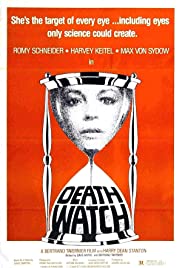In Jacques Rivette’s original conception, Duelle
would have been the second of a four-film series of linked Scenes de la vie
parallele, and it’s hard not to regret that the project was never finished
(only one other, Noroit, was made) and to speculate on how the films
might have informed and complemented each other. Like Noroit, Duelle
shares many characteristics of Rivette’s towering achievement of a few years
earlier, Celine and Julie Go Boating– a focus on two women (played by
Juliet Berto and Bulle Ogier, who were both part of the earlier film) and a
situation that clearly can’t be taken “realistically,” to name just a few. Also
like Noroit, it’s heavier going for the most part, its sense of Paris
defined more by night-time interiors than by Celine and Julie’s light-infused
playground. That’s somewhat inherent to the film’s intrigue though, its
enactment of an outlandish situation (a meeting of two supernatural beings, one
representing the sun and the other the moon) filtered through the gravity of
real places and settings (summed up by the final confrontation, taking place
under an apparently mystically-charged tree, but filmed in what appears to be a
public park with trains and cars and pedestrians clearly visible in the
background) with only the simplest and most transparent of cinematic trickery.
The film is perhaps less elevating than Celine and Julie as an
expression of female possibility (the scope for autonomy and expression is
limited by the imposed narrative and stylistic rules), but it’s still a film
almost entirely driven by feminine intention and action, defined by women who,
if looked at, look back with piercing strength, often dressed and moving
androgynously (much of the action revolves around a hostess dance hall,
depicted here as utterly devoid of eroticism). The film doesn’t deny human
frailty though, most poignantly through a sad secondary character played by
Nicole Garcia, whose momentary joy at fulfilling her dreams is snuffed out
almost as soon as it began; perhaps there’s a link there to Rivette’s own
documented frailty around this time, and to the way both Noroit and Duelle
now appear as transitional works, almost as a form of ritual purging before
recharging and moving on.




